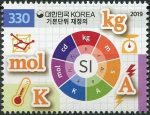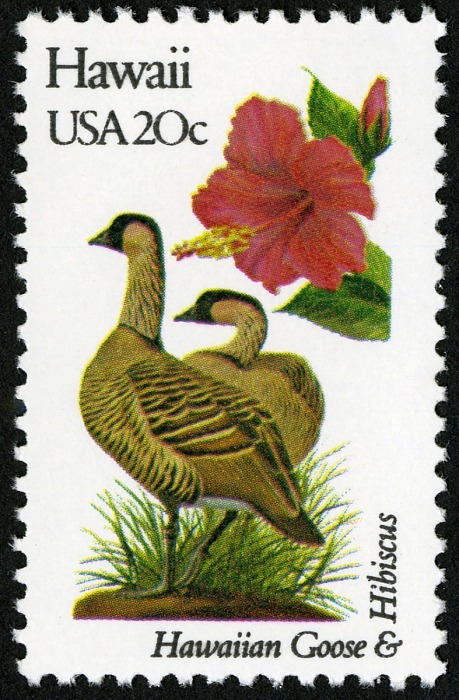(Explore the history and landscape of the United States with us as we approach the 250th anniversary of American Independence. Get out your atlas and almanac and follow along!)
Hawaii is our homeschool state-of-the-week, so why not spend a few minutes today with your students learning about one of Hawaii’s most important natural and historical places: Hawaii Volcanoes National Park, which protects the dramatic geological landscapes of “the Big Island” of Hawaii.
![[Homeschool American Heritage]](https://upload.wikimedia.org/wikipedia/commons/thumb/0/0c/Sulfur_dioxide_emissions_from_the_Halemaumau_vent_04-08-1_1.jpg/1024px-Sulfur_dioxide_emissions_from_the_Halemaumau_vent_04-08-1_1.jpg)
“Hawai‘i Volcanoes National Park protects some of the most unique geological, biological, and cherished cultural landscapes in the world. Extending from sea level to 13,680 feet, the park encompasses the summits of two of the world’s most active volcanoes – Kīlauea and Mauna Loa – and is a designated International Biosphere Reserve and UNESCO World Heritage Site.”
The eight Hawaiian Islands we know today are only the most recent formations in a chain of over 80 volcanoes that stretch for thousands of miles to the northwest, both above and below sea-level. The further southeast in this chain, the younger the volcano, ending with the island of Hawai’i and Lō‘ihi, a growing volcano still beneath the ocean’s surface.
All of the volcanoes (both active and inactive) in this long chain formed because of the Hawaiian hot spot, a stationary plume of super-heated material deep in the earth. Heat from this material rises, eventually melting rock into magma. The magma then continues to rise. When some of it pushes its way to the surface, a volcanic eruption takes place.
The exact size of the Hawaiian hot spot is not fully understood, but it is large enough to encompass most of the Island of Hawaiʻi. Some scientists estimate the hot spot to be about 200 miles across, with much narrower vertical passageways that feed magma to the individual volcanoes.
Meanwhile, the Pacific Plate, one of the several tectonic plates that move around the surface of the earth, migrates slowly to the northwest. As it moves an estimated 2–4 inches per year, it carries with it any land that formed during volcanic eruptions. The result is like an assembly line. The hotspot stays in one place, producing new land through eruptions, and the pacific plate carries them away. (nps.gov)
You can find a wealth of additional information about the Park’s history, landscape, location(s), and visitor facilities on the webpage for Hawaii Volcanoes National Park from the National Park Service, and also on the Park’s page on Wikipedia.
![[Homeschool American Heritage]](https://upload.wikimedia.org/wikipedia/commons/thumb/8/8d/Halema%E2%80%98uma%E2%80%98u_2015-04-24_05-21.jpg/1024px-Halema%E2%80%98uma%E2%80%98u_2015-04-24_05-21.jpg)
Explore America’s National Parks, National Historical Parks, National Historic Sites, National Monuments, and more via Wikipedia and via the U.S. National Park Service’s website today.
What American treasures have you and your students been exploring in your homeschool this Hercules Term? 🇺🇸
❡ The great globe itself: This is one of our regular Homeschool Geography posts featuring important natural and historical sites in the United States. Print your own copy of our River Houses American Heritage Calendar and follow along with us, and add your name to our weekly mailing list to get great homeschool teaching ideas delivered right to your mailbox all through the year. 🌎
❡ We set to-day a votive stone: If you want a great long-term history and geography project for your homeschool, explore the Historical Marker Database online (hmdb.org) and make a plan to find all the markers that are listed in your local area. Add any new ones you know of that are missing, and add new photos or descriptions for the ones already included. Your students will gain a better appreciation for your local community and will learn a wealth of new information about history and geography. 🏛
❡ Print this little lesson: Down at the bottom of this post you’ll find a special “Print” button that will let you create a neat and easy-to-read copy of this little lesson, and it will even let you edit and delete sections you don’t want or need (such as individual images or footnotes). Give it a try today! 🖨
❡ Books in the running brooks: You can always turn to your River Houses atlas and almanac for more information about any of our homeschool states-of-the-week. The almanac has detailed profiles of all the U.S. states and territories, and the endpapers of the atlas are indexes that will show you where all of the individual national and regional maps may be found. 📚
❡ Homeschool calendars: We have a whole collection of free, printable, educational homeschool calendars and planners available on our main River Houses calendar page. They will help you create a light and easy structure for your homeschool year. Give them a try today! 🗓
❡ Support our work: If you enjoy our educational materials, please support us by starting your regular Amazon shopping from our very own homeschool teaching supplies page. When you click through from our page, any purchase you make earns us a small commission at no extra cost to you. Thank you for helping us to keep going and growing! 🛒
❡ Join us! The aim of the River Houses project is to create a network of friendly local homeschool support groups — local chapters that we call “Houses.” Our first at-large chapter, Headwaters House, is now forming and is open to homeschoolers everywhere. Find out how to become one of our founding members on the Headwaters House membership page. 🏡




